Buta no Kakuni (Japanese Braised Pork Belly)
Ingredients
- 600 g slab skinless pork belly
- 30 g ginger root
- 1 Japanese leek (naganegi) green part
Marinade
- 500 ml pork broth the liquid from cooking the pork
- 100 ml lager beer
- 1 tbsp honey
- 2 tbsp light brown sugar
- 100 ml Japanese soy sauce (koikuchi shoyu)
- 4 soft-boiled egg optional
- Japanese leek (naganegi) white part, optional garnish
- Japanese mustard (karashi) optional, or hot English mustard
Instructions
Part 1
- Start heating a large pot of water (enough to submerge the pork). When it reaches boiling, turn it down to a simmer.
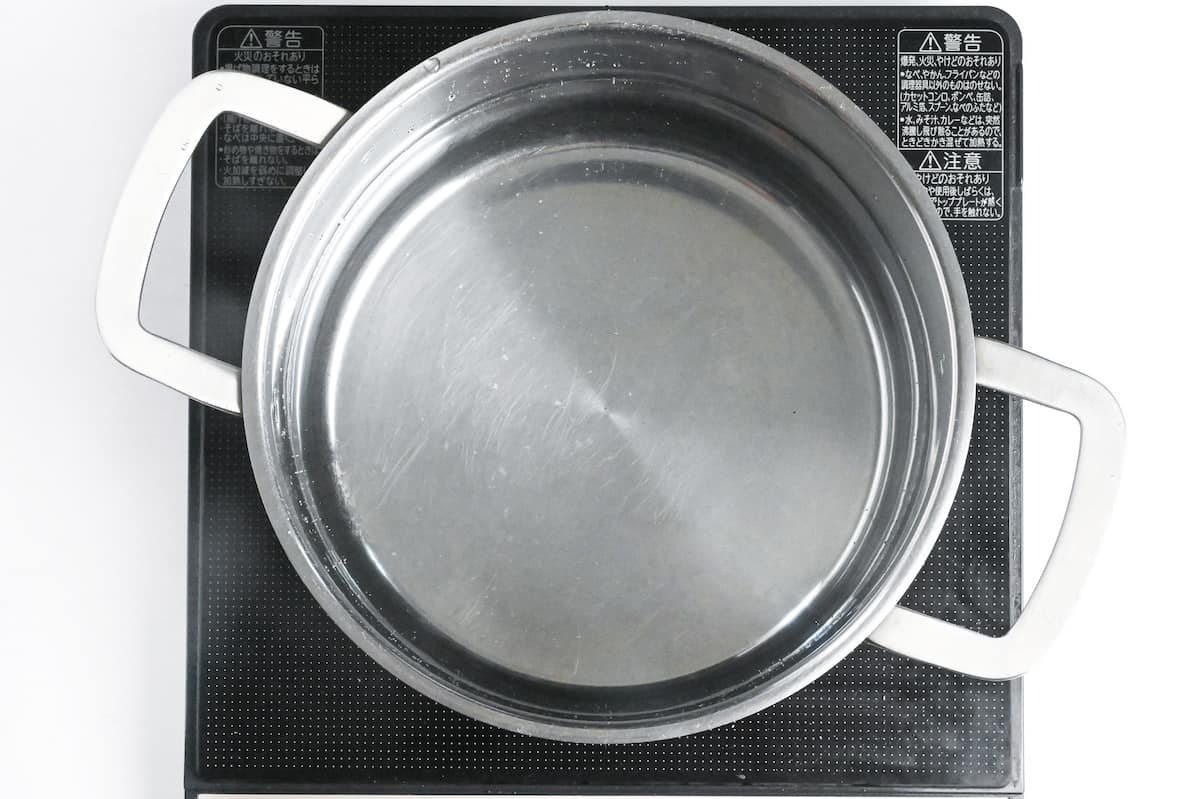
- Heat a frying pan on medium/medium-high and sear 600 g slab skinless pork belly on all sides.
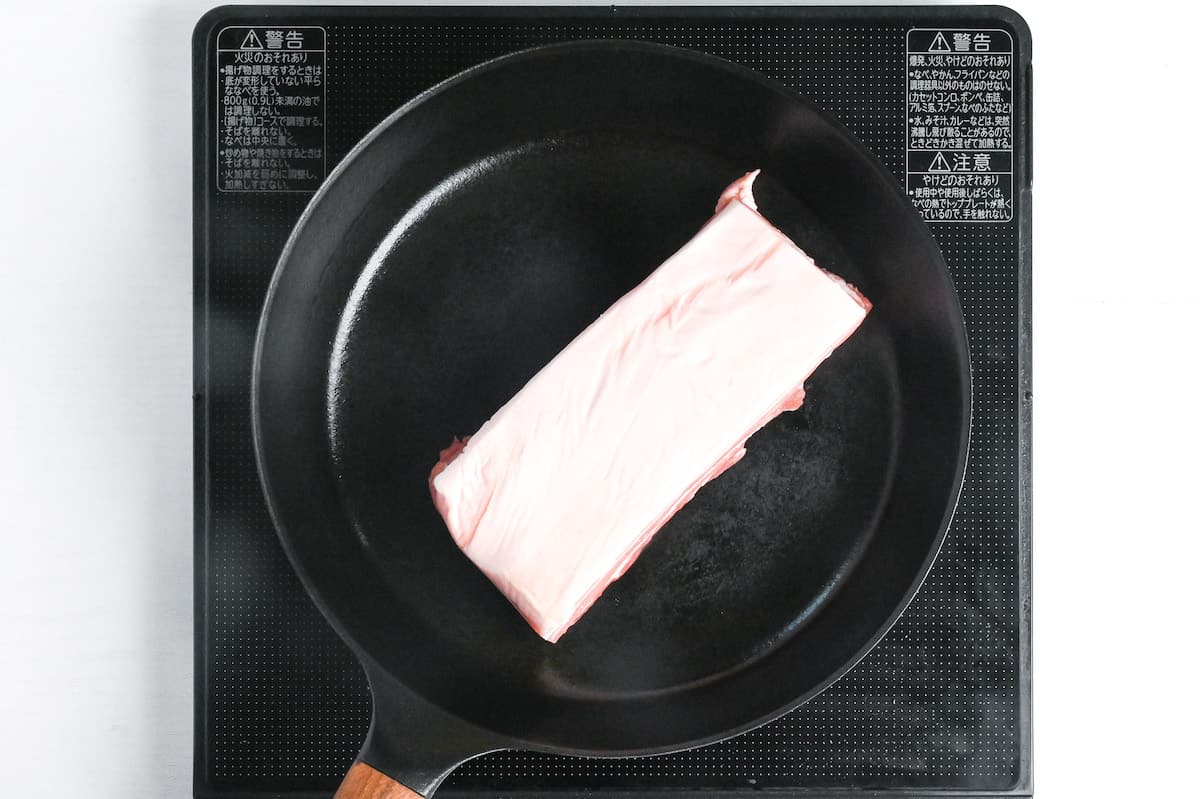
- Once seared, transfer the pork to a chopping board and let it cool for a few minutes. When it's cool enough to touch, cut it into chunks.

- Place the chunks in the pot of water and allow to simmer for 10 minutes.
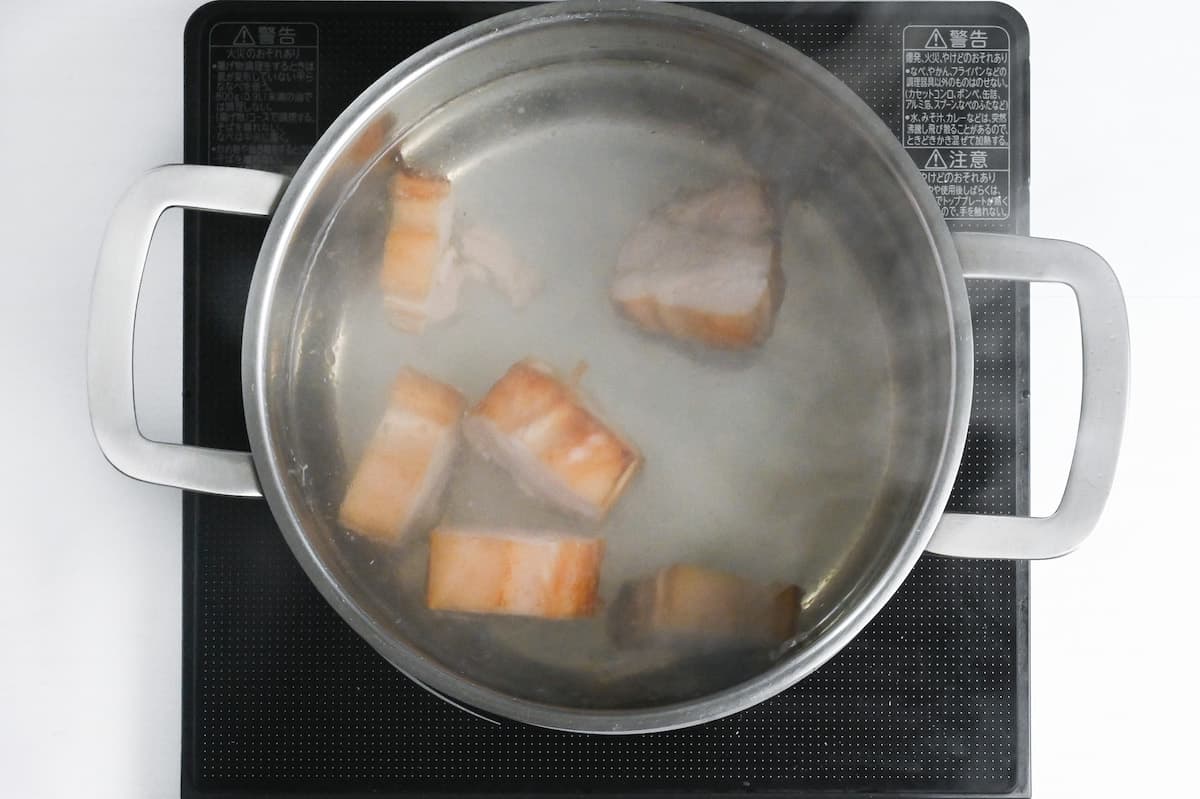
- After 10 minutes have passed, pour the pork into a colander and wash it with cold water. Rinse out the pot, fill it with enough water to cover the pork, and bring to boil once more.

- Cut 30 g ginger root into slices and break 1 Japanese leek (naganegi) into thirds. Once the water starts to boil, add them to the pot along with the pork, and lower the heat. Simmer for one hour.Make sure the pork is always submerged and top up the water if necessary.
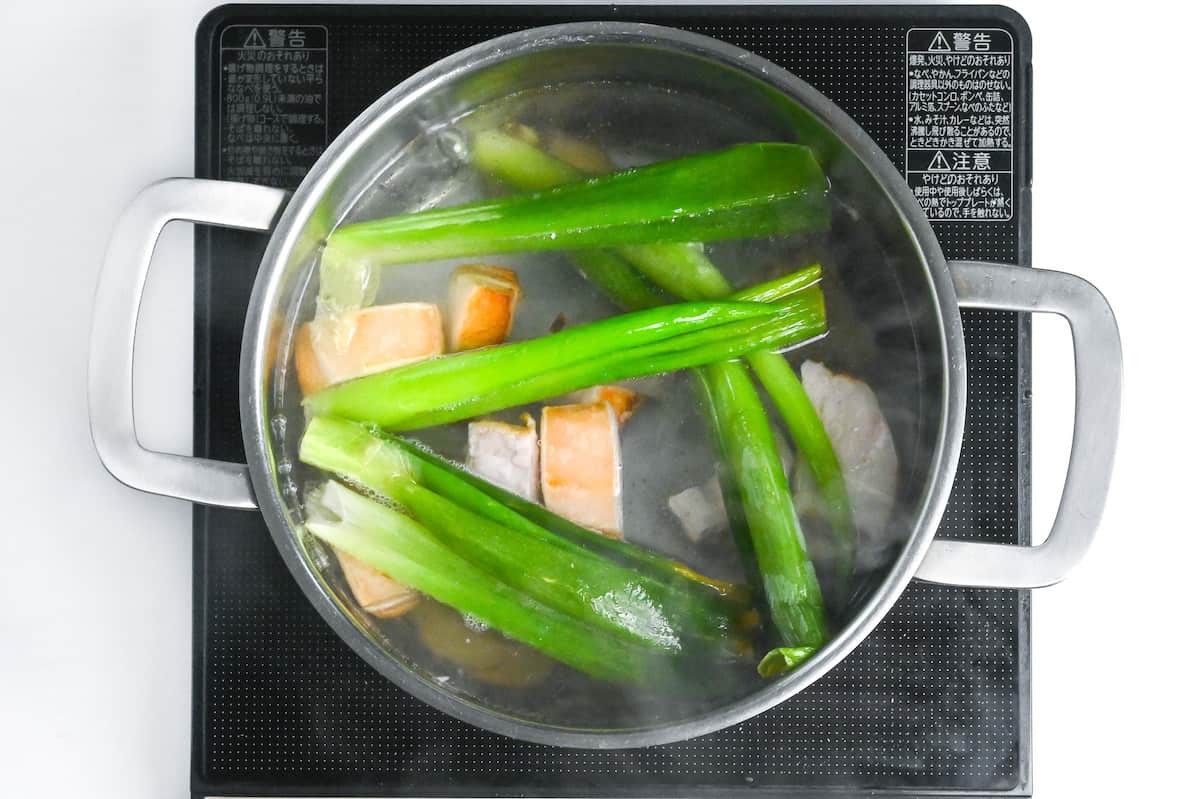
Part 2
- After one hour, turn off the heat and measure out 500 ml pork broth from the pot with the pork.

- Pour it into a large saucepan and add 100 ml lager beer, 1 tbsp honey, 2 tbsp light brown sugar and 100 ml Japanese soy sauce (koikuchi shoyu). Mix and bring to boil.
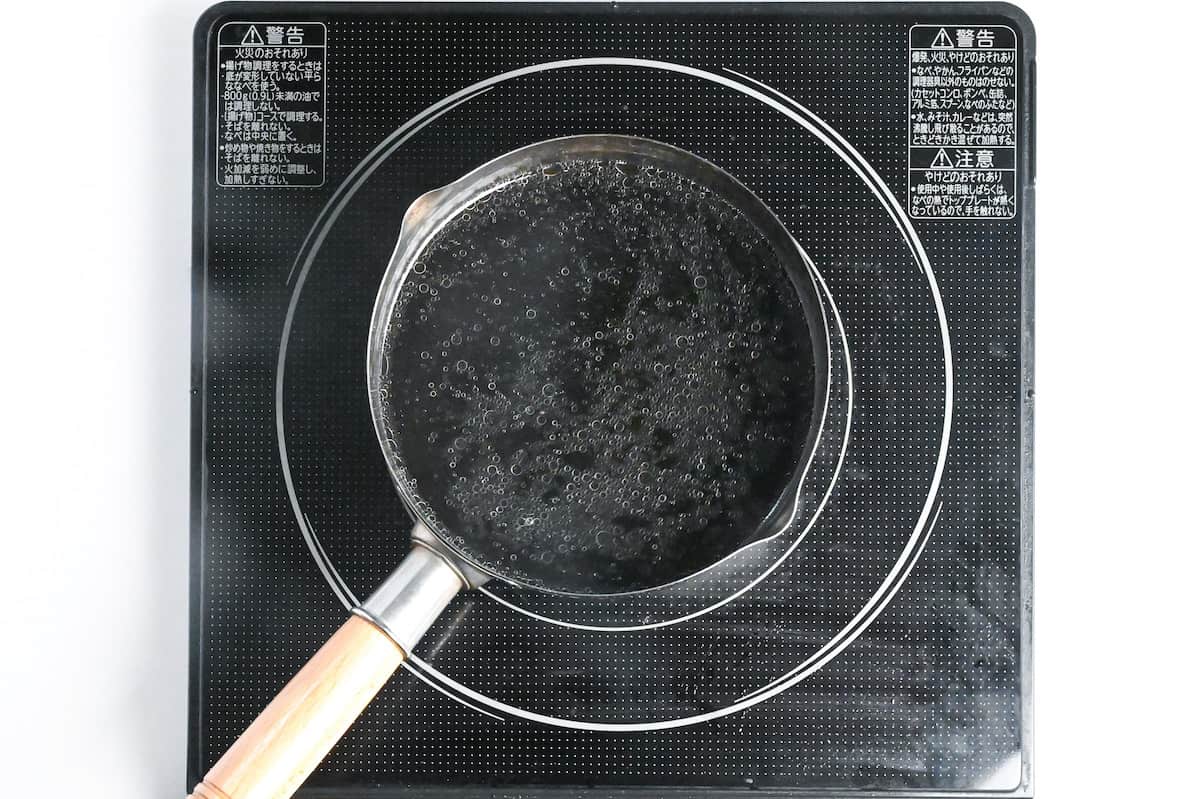
- Once boiling, lower the heat to simmer and add the pork.

- Place a drop lid on top of the pork and simmer on low for 30 minutes.After 30 minutes, turn off the heat and leave to cool. Once cool, add 4 soft-boiled egg (optional) and marinate in the pot for 1 hour. (You can store it in the fridge if you plan to marinate longer.)
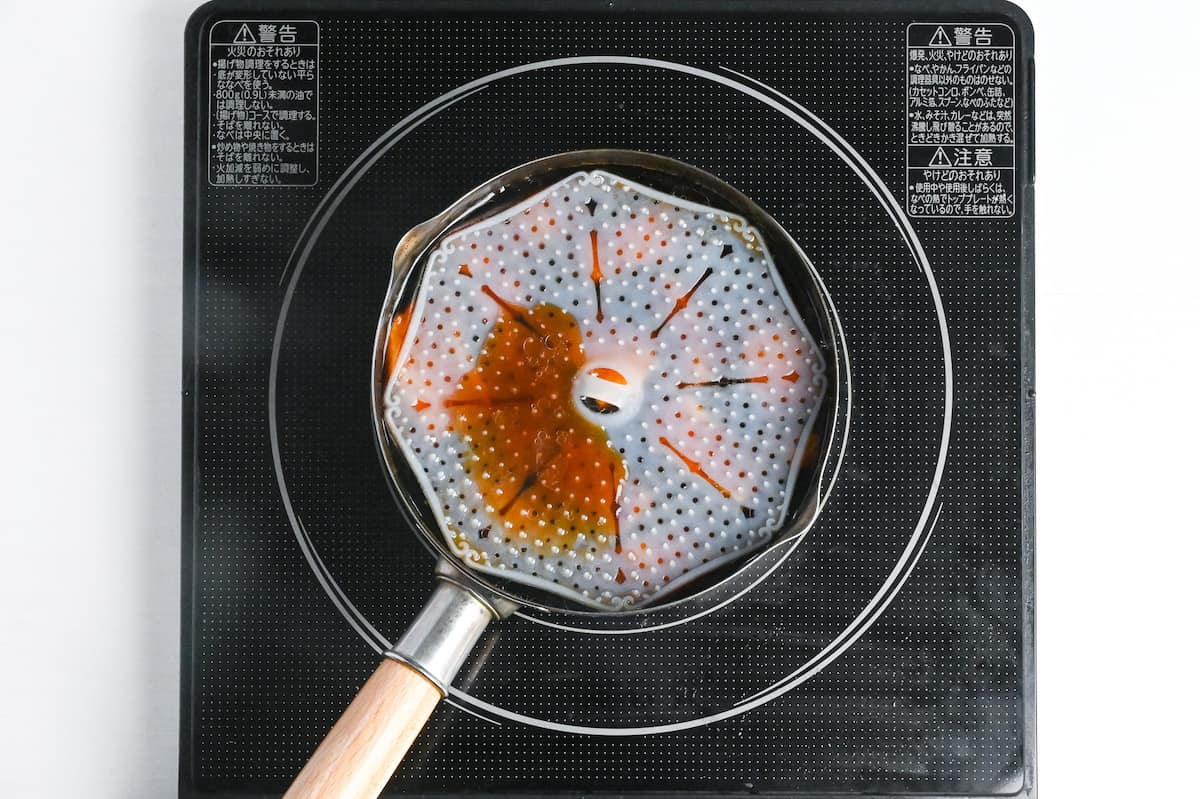
- Return the pot to the stove and heat on medium for about 15 minutes or until warmed through. Remove the eggs after 5-10 minutes to prevent overcooking.

- If you want to garnish with "shiraganegi", cut the white part of a Japanese leek (naganegi) into thin strips and soak in lightly salted water until serving.
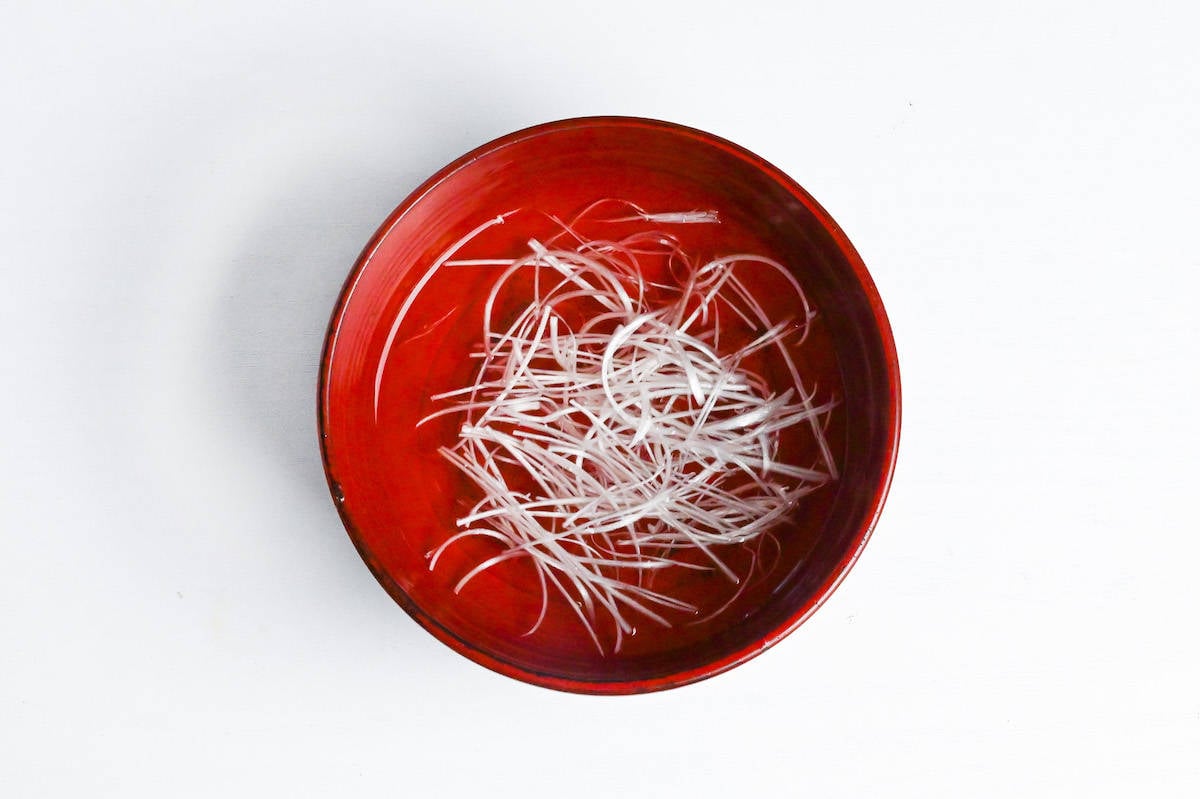
- Dish up and serve with Japanese mustard (karashi).
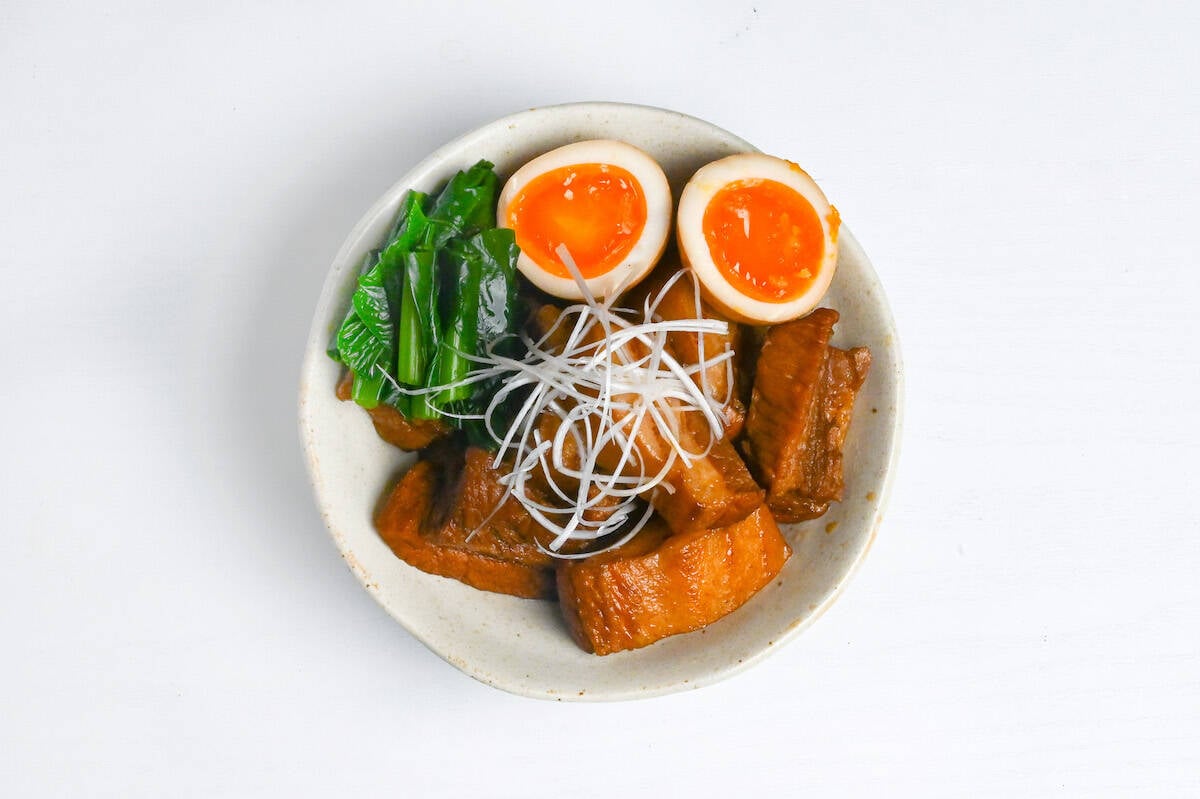
- Enjoy!
Notes
- This dish is quite time consuming so I recommend making a large batch so you can use it for multiple meals.
- If you increase the pork in the recipe, increase the broth in part 2 accordingly. (It needs to be submerged and you might be able to get away with using less broth depending on the size of your pan.)
- Note: The nutritional information includes the marinade.